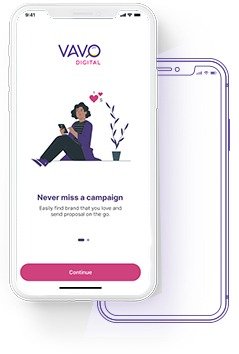
Expert curated Influencer Marketing Strategies that work in 2025
Influencer marketing is no longer a buzzword,it’s an essential pillar of modern brand communication. As we head deeper into 2025, the landscape is shifting fast. What worked last year might fall flat today. Algorithms change, platforms evolve, and audiences grow savvier. So how do brands stay ahead?
In this guide, we’ll break down influencer marketing strategies that are set to actually work in 2025,based on real trends, authentic consumer behavior, and a clear-eyed look at where the digital world is heading.
1. Micro and Nano Influencers Will Reign Supreme
In 2025, bigger is not always better. More brands are shifting their budgets away from mega-celebrities and instead tapping into micro (10K–100K followers) and nano (under 10K followers) influencers.
Why? Engagement.
These creators tend to have tighter-knit communities, higher interaction rates, and a more authentic connection with their followers. Consumers trust them because they feel relatable, not aspirational. That trust leads to conversions.
Tip: Focus on building long-term partnerships with micro-influencers whose values align with your brand. Treat them like creative collaborators,not just a content delivery service.
2. Long-Term Relationships Over One-Off Posts
In 2025, consistency matters. Flashy one-off campaigns may generate momentary buzz, but audiences crave continuity. They want to see influencers using a product regularly, not just holding it once for a sponsored photo.
Ongoing partnerships show authenticity and commitment. They also allow your brand story to unfold over time, which builds credibility and loyalty.
Tip: Invest in ambassador programs. Sign influencers for 3-6 month periods to allow for storytelling, seasonal content, and evolving engagement.
3. AI-Enhanced Matching,But Keep the Human Touch
Yes, AI tools have made influencer discovery faster. Platforms now use machine learning to identify potential partners based on niche, engagement metrics, tone, and audience overlap. But in 2025, brands that rely solely on automation will lose the nuance that makes influencer marketing so powerful.
Use AI to narrow the list. But final decisions? Still human.
Tip: Combine tech tools with personal vetting. Follow the influencers, watch their Stories, and read comments. You’re not just buying reach, you’re aligning with a voice.
4. Video-First Strategy Across Platforms
Short-form video is still dominating,on Instagram Reels, YouTube Shorts and now even Pinterest and LinkedIn are leaning into video content. But in 2025, the most effective influencer content will go beyond the “viral dance” aesthetic.
Think real product demos, behind-the-scenes glimpses, “a day in my life” formats, and raw storytelling.
Tip: Empower creators with loose briefs that encourage authentic storytelling. The less scripted, the more it resonates.
5. Influencer-Led Commerce Is the New Retail
Thanks to native shopping features, creators can now serve as virtual storefronts. In 2025, expect even more seamless integration between influencer content and ecommerce.
Influencers are becoming not just promoters but converters. The key is offering the right experience,something that feels natural, not transactional.
Tip: Co-create exclusive bundles or limited drops with influencers. Give them something only they can offer to their community.
6. Creator-Owned Content Is King
Brands are learning the value of repurposing influencer content, not just for social media but for ads, landing pages, and email marketing. In 2025, UGC (user-generated content) is evolving into COC (creator-owned content), high-quality, brand-aligned and ready for cross-platform distribution.
Tip: When negotiating partnerships, include content usage rights. Then repurpose that content for maximum ROI, think testimonials, lifestyle visuals, or even voiceovers for brand reels.
7. Values-Driven Collaborations Will Cut Through the Noise
In an era where consumers care deeply about sustainability, inclusivity, and authenticity, brands that stand for something will win. And so will the influencers who align with those values.
People are more likely to buy from a brand that supports causes they care about. In 2025, expect to see more campaigns built around shared missions, not just products.
Tip: Partner with influencers on cause-based campaigns. Think eco-conscious packaging launches, charitable collabs, or DEI-focused storytelling.
8. First-Party Data and Performance Tracking Are Essential
Gone are the days of “likes and vibes” as KPIs. In 2025, brands are demanding data,and creators are delivering it. Through affiliate links, UTMs, and platform integrations, it’s now easier to track real conversions, not just impressions.
Tip: Set up trackable links, discount codes, or landing pages for each influencer. Monitor performance and optimize in real-time.
Final Thoughts
Influencer marketing in 2025 is smarter, more human, and deeply rooted in trust. Brands that prioritize authentic voices over vanity metrics, long-term relationships over one-off deals, and storytelling over shouting will see real results.
So whether you’re a scrappy startup or an established brand, the path forward is the same: build relationships, empower creators, and let trust drive your strategy.
Because in 2025, it’s not just about influencing,it’s about belonging




